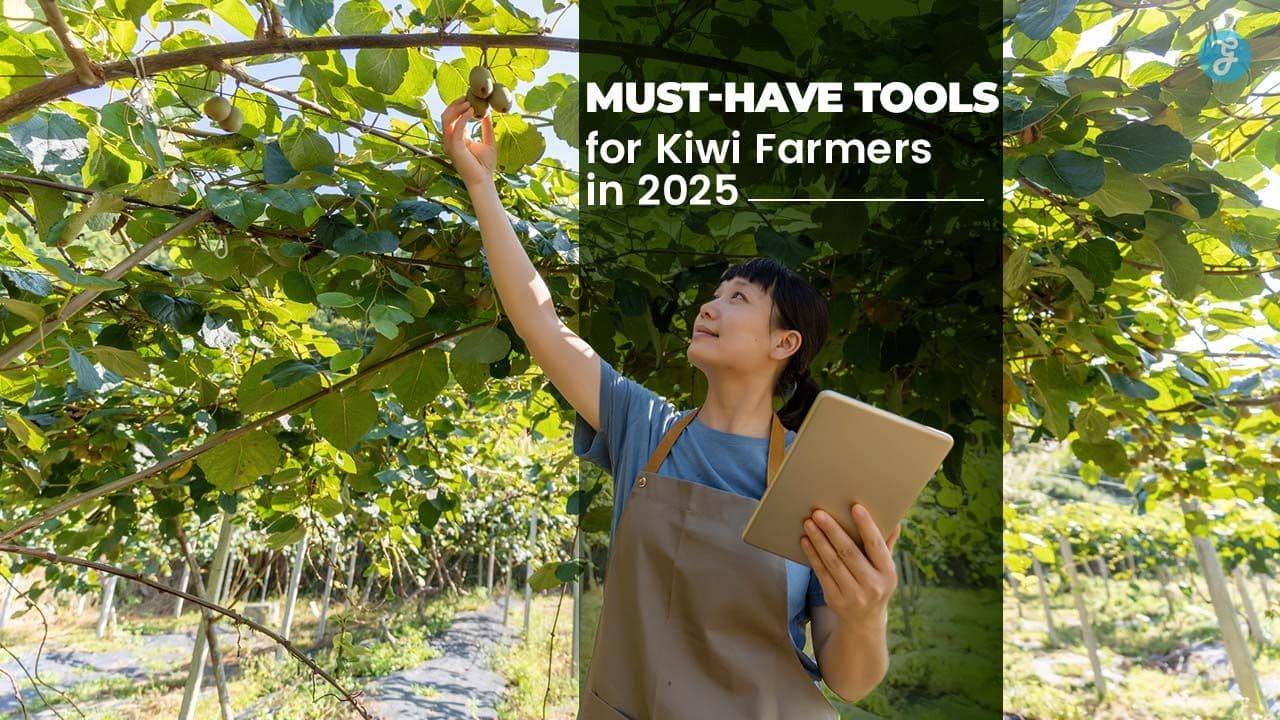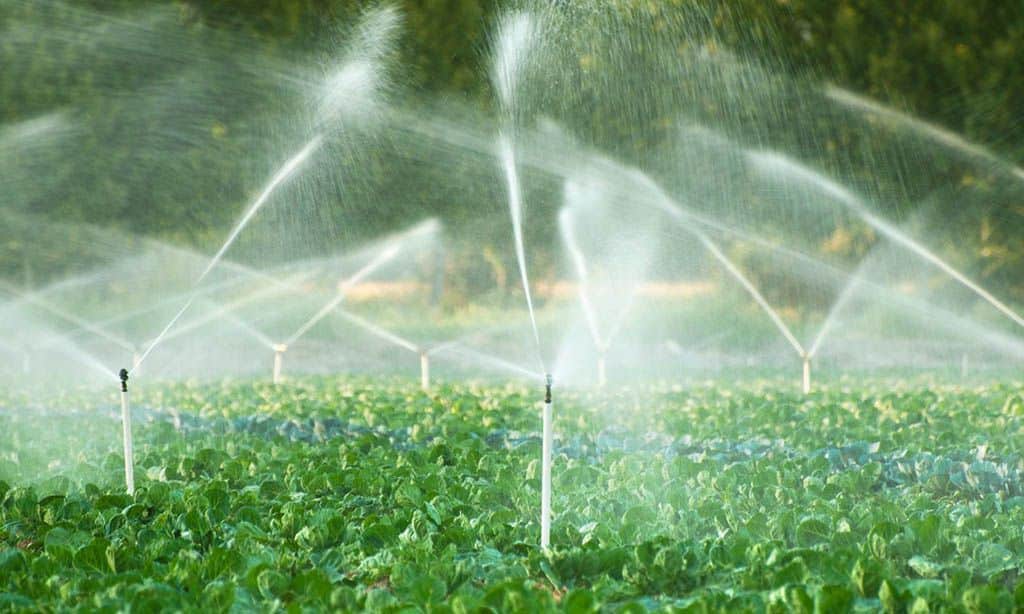Farming in New Zealand, known for its rich soils and favorable climate, is both a livelihood and a legacy for many.
However, with the increasing demand for sustainable practices and technological advancements reshaping agriculture, Kiwi farmers face the need to adapt and evolve. Choosing the right tools not only enhances efficiency but also ensures better resource management and environmental stewardship.
This article highlights the 10 must-have tools for Kiwi farmers to thrive in 2025. From advanced technology to practical farming implements, these tools cater to the unique challenges and opportunities present in New Zealand’s agricultural landscape.
1. Soil Testing Kits
Soil testing kits are indispensable tools for farmers looking to understand their soil’s health and fertility. These kits enable Kiwi farmers to analyze essential soil components like pH levels, nutrient content, and organic matter.
By identifying deficiencies in nitrogen, phosphorus, or potassium, farmers can make precise adjustments to fertilization plans. Regular soil testing also helps prevent over-fertilization, reducing environmental pollution and optimizing resource use.
With compact designs and user-friendly features, modern soil testing kits are easy to carry and operate in the field. For Kiwi farmers aiming to achieve higher crop yields and sustainable farming practices, soil testing kits are a must-have tool.
Benefits of Soil Testing Kits
- Enhances crop productivity.
- Reduces unnecessary fertilizer usage.
- Promotes sustainable farming practices.
- Cost-effective in the long term.
Key Features to Look For
| Feature | Importance |
| pH Testing | Determines soil acidity or alkalinity. |
| Nutrient Analysis | Identifies essential nutrient deficiencies. |
| Compact Design | Easy portability and usability in the field. |
| Digital Readouts | Provides accurate and immediate results. |
Using soil testing kits ensures Kiwi farmers maintain fertile and productive land while protecting the environment.
2. GPS-Enabled Tractors
GPS-enabled tractors are transforming traditional farming methods by introducing precision agriculture practices. These tractors use advanced satellite navigation to automate essential processes like plowing, planting, and harvesting.
By minimizing overlaps and gaps in fieldwork, GPS systems save time, reduce fuel costs, and maximize field productivity. For Kiwi farmers working on diverse terrains, this tool ensures consistent results regardless of the topography.
Many GPS-enabled tractors also come with real-time monitoring systems, allowing farmers to analyze data and improve operations further. Investing in a GPS-enabled tractor means embracing efficient farming practices while reducing labor and operational costs.
Why Kiwi Farmers Need GPS Tractors
New Zealand’s diverse topography makes accurate navigation essential. GPS-enabled tractors improve field coverage and reduce fuel and labor costs.
Benefits of GPS-Enabled Tractors
- Enhances field accuracy.
- Saves time and reduces resource wastage.
- Minimizes overlap during planting and harvesting.
- Tracks operational performance.
Comparative Features of GPS-Enabled Tractors
| Feature | Benefit |
| Real-Time Monitoring | Tracks tractor movement and efficiency. |
| Automated Steering | Reduces manual effort and ensures precision. |
| Data Integration | Syncs with farm management systems. |
| Fuel Optimization | Saves costs by improving operational accuracy. |
3. Livestock Monitoring Systems
Livestock monitoring systems use wearable sensors and IoT technology to keep track of an animal’s health, activity levels, and location. This tool is especially valuable for Kiwi farmers managing large herds, as it enables early detection of illnesses, reducing veterinary costs and improving overall herd productivity.
With features like GPS tracking, health monitoring, and breeding alerts, farmers can ensure timely interventions and optimize livestock management. These systems also allow real-time updates via smartphone apps, making it easy to monitor livestock remotely.
Livestock monitoring systems are an essential investment for farmers prioritizing animal welfare and efficient herd management.
Benefits
- Reduces veterinary costs through early detection of illnesses.
- Tracks herd movement and prevents losses.
- Optimizes breeding schedules.
Features to Look For
| Feature | Purpose |
| Health Sensors | Tracks body temperature and vital signs. |
| GPS Tracking | Monitors herd location in real-time. |
| Breeding Data | Predicts optimal breeding windows. |
| App Integration | Allows easy monitoring through smartphones. |
4. Irrigation Management Systems
Water is a critical resource in farming, and irrigation management systems are designed to use it efficiently. These systems leverage weather data, soil moisture sensors, and automated timers to ensure crops receive just the right amount of water.
For Kiwi farmers facing unpredictable weather patterns or water restrictions, irrigation management systems can significantly reduce water wastage while maintaining crop health. Advanced features like remote control via smartphone apps and integration with weather forecasts make these systems user-friendly and highly effective.
By adopting irrigation management systems, farmers can boost crop yields while adhering to sustainable water management practices.
Benefits of Smart Irrigation Systems
- Conserves water resources.
- Enhances crop yield and quality.
- Reduces water-related costs.
Key Features
| Feature | Purpose |
| Weather Sensors | Adjusts irrigation based on weather patterns. |
| Soil Moisture Sensors | Monitors water levels to optimize irrigation. |
| App Controls | Remote system operation and monitoring. |
| Automated Timers | Ensures precise watering schedules. |
5. Drones for Agriculture
Drones have revolutionized farming by offering aerial views that help monitor crop health, identify pest infestations, and optimize resource use.
Equipped with cameras and sensors, drones can scan large areas quickly, providing actionable insights into soil conditions and crop performance. For Kiwi farmers managing extensive lands, drones save time and labor while ensuring precision.
These devices are also used for tasks like spraying fertilizers and pesticides, reducing chemical wastage. By investing in agricultural drones, farmers can make informed decisions, reduce operational costs, and embrace cutting-edge technology for better farming outcomes.
Applications of Drones in Farming
- Mapping crop health and identifying pest infestations.
- Monitoring livestock across vast areas.
- Precision spraying of fertilizers and pesticides.
Advantages of Using Drones
| Advantage | Description |
| Aerial Imaging | Detects crop health issues early. |
| Time Efficiency | Covers large areas quickly. |
| Reduced Costs | Cuts labor and input costs. |
| Environmental Benefits | Reduces chemical wastage. |
6. Portable Milking Machines
Portable milking machines are essential for dairy farmers looking to save time and improve efficiency. These machines are designed to extract milk hygienically, reducing the labor-intensive process of manual milking.
For Kiwi farmers managing large herds, portable milking machines ensure consistent milk quality while minimizing animal stress. Advanced features like automated cleaning systems and lightweight designs make these machines easy to operate and maintain.
By investing in portable milking machines, farmers can streamline their operations and meet high-quality standards in dairy production, ultimately boosting profitability.
Benefits of Portable Milking Machines
- Saves time compared to manual milking.
- Ensures hygienic milk extraction.
- Reduces labor requirements.
Key Features
| Feature | Benefit |
| Lightweight Design | Easy to move between livestock. |
| Automated Cleaning | Simplifies maintenance. |
| Multiple Attachments | Milks more than one animal at a time. |
7. Smart Weather Stations
Smart weather stations provide real-time information on temperature, humidity, rainfall, and wind speed, helping farmers make data-driven decisions. For Kiwi farmers, who often face sudden weather changes, this tool is invaluable for planning irrigation, fertilization, and harvest schedules.
Many smart weather stations are equipped with connectivity features, allowing farmers to access weather updates via smartphone apps.
By using this data, farmers can protect their crops from adverse weather conditions and optimize resource use. Investing in a smart weather station ensures better preparedness and more efficient farming practices, leading to improved productivity and sustainability.
Benefits
- Helps plan irrigation and fertilization.
- Protects crops from extreme weather.
- Enhances overall farm management.
Features to Look For
| Feature | Importance |
| Rain Gauges | Tracks precipitation levels. |
| Temperature Sensors | Monitors crop health conditions. |
| Connectivity Options | Integrates with farm management apps. |
8. Multi-Purpose Tool Kits
Every farmer needs a reliable multi-purpose tool kit to handle day-to-day maintenance tasks. From fixing fences to repairing machinery, these kits contain essential tools like pliers, screwdrivers, and wrenches.
For Kiwi farmers, having a multi-purpose tool kit means being prepared for emergencies and reducing dependency on external repair services. High-quality tool kits are durable and designed for heavy-duty use, ensuring they last for years.
By keeping a multi-purpose tool kit handy, farmers can save time and money while ensuring their equipment and infrastructure remain in top condition.
Benefits of Having a Tool Kit
- Saves time in emergencies.
- Reduces dependency on external services.
- Offers a cost-effective way to handle repairs.
Components of a Good Tool Kit
| Tool | Use |
| Pliers | Wire cutting and bending. |
| Wrenches | Equipment assembly and repairs. |
| Screwdrivers | Fixing machinery and fixtures. |
9. Seed Planters
Seed planters are a vital tool for automating the sowing process, ensuring uniform planting depth and spacing. This not only improves seed germination rates but also maximizes field coverage.
For Kiwi farmers working on large fields, seed planters save significant time and reduce labor costs. Modern seed planters come with adjustable settings to accommodate various seed types, making them versatile for different crops.
By investing in a high-quality seed planter, farmers can boost productivity and achieve consistent yields season after season.
Benefits
- Reduces manual labor.
- Improves seed germination rates.
- Maximizes field coverage.
Key Features
| Feature | Advantage |
| Adjustable Settings | Customizes planting depth and spacing. |
| Compact Design | Ideal for small and large farms alike. |
10. Electric Fencing Systems
Electric fencing systems are essential for protecting crops and livestock. These fences deter wild animals from entering crop fields and prevent livestock from straying. For Kiwi farmers, electric fences offer a cost-effective and low-maintenance solution for farm security.
Modern systems often include solar-powered options, making them environmentally friendly.
Durable materials and easy installation features add to their appeal. By investing in electric fencing systems, farmers can enhance the safety of their farms while reducing the risk of crop damage and livestock loss.
Benefits
- Prevents livestock from straying.
- Deters wild animals from damaging crops.
- Requires minimal maintenance.
Key Features
| Feature | Benefit |
| Solar Power Options | Environmentally friendly operation. |
| Durable Materials | Ensures long-lasting performance. |
Takeaway
Investing in the must-have tools for Kiwi farmers can significantly enhance efficiency, productivity, and sustainability. Whether it’s using drones for precision farming or leveraging GPS-enabled tractors, these tools represent the future of agriculture.
By incorporating these innovations, Kiwi farmers can stay ahead in the competitive farming landscape while ensuring long-term environmental stewardship.
Make informed choices today to secure a prosperous farming future!











































